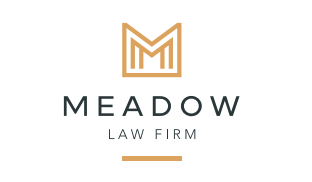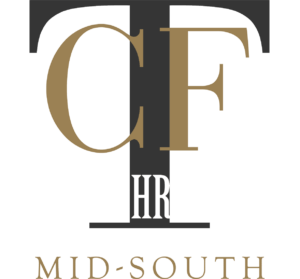Susan Barfield (0:00:05) – Hello everyone. Thank you for joining another episode of the Leverage Report. I’m joined today by Dan Miner, who is our president and CFO. We’re going to be talking about all things fee deferral. And Dan, if you don’t mind, take a moment and share a little bit about your background round and just tell us a little bit about how the fee deferral solution can create financial leverage for law firms.
Dan Miner (0:00:33) – Sure. So I started my career as an engineer in the aerospace world, then moved into the management consulting space. I’m still a recovering consultant in many ways. Then, I moved into the office of the CFO, where I joined the Bankrate team. We sold Bankrate to a business called Red Ventures. I settled to do a handful of operating roles and then joined the legal industry about five years ago. And that was my first exposure to litigation financing and litigation funding. And it’s an industry that has changed in the last five years. There’s significant growth in the space, growing at roughly 9% to 10% every year. The expectations growing to a mid $20 billion market within the next four or five years. And so huge growing market, lot of capital coming into the space. And it changes the dynamics of a law firm. Law firms now have the ability to produce very large dockets of cases because the capital is there to support case acquisition. And so when we think about fee deferral, many of these law firms are looking for opportunities to redeploy the cash that they would for case development services back into case acquisition. And the ROI is quite staggering. Improvements in ROI of 40% to 50% just by instead of paying the cash fees for case development, you defer those into the time of settlement, take that capital and go generate more cases. And it allows the law firms to create some leverage and so that they get substantial upside when those cases settle. It also turns out to be a benefit to the various players in the space. But what it requires is you have to have a partner that’s going to be there with you from beginning to end, and that partner is going to work on those cases to get them to a compensable status and then stay in touch with those clients all the way to the end to make sure that those cases ultimately turn into cash flow for the law firm. And so, huge business, the industry is growing, and it creates a ton of opportunity as well as leverage for the law firms.
Susan B.(0:02:40) – Dan, one question that I get a lot is, or comments that I hear for firms that we’re talking to, they come to us, and they say, my cases are just not getting worked. Why do you think that is? Why? Do you think that their cases are not getting worked at other providers that potentially offer fee deferral solutions?
Dan M. (0:03:03) – Yeah. So one of the challenges with fee deferral is the companies that are offering fee deferral are putting their balance sheet at risk, so they’re not going to get paid until the time of case resolution. And so these cases can take three, four, five, unfortunately, sometimes six or seven years until settlement. And so if you’re waiting six or seven years till settlement, you may end up losing money, especially if you have to take out debt capital in order to finance that fee deferral solution. And so what ends up happening is many of the players who are offering fee deferral solutions, they’re doing it for a small subset of cases, cases that are closer to settlement, cases that are very close to potentially a case resolution. And what it creates is prioritization. So these fee deferral solution partners, they’re going to prioritize the cases that are near settlement or potentially having settlement conversations over those that may be pre-Daubert or over those that may even still be very early on in the case acquisition process. And the feedback we hear is consistent across the board. Firms are saying our cases aren’t getting worked up, we don’t have visibility into what’s going on with our cases. Our clients aren’t being contacted, and many times it’s a result of the vendor or the partner prioritizing those cases that are closer to settlement and letting the cases that aren’t so close to settlement kind of sit and mold her.
Susan B.(0:04:24) – Okay, well, explain that because explain balance sheet risk versus how Case Works partners to have a fee deferral solution and how that’s different and why we don’t have prioritization on working up certain cases. We just treat every case the same and trying to get them across the finish line.
Dan M. (0:04:44) – Yeah. So we put a lot of brain power into our fee deferral solution. We did not want to put our balance sheet at risk. We didn’t want to create this situation where we’re trying to, one, treat every case as a number. We don’t want to have a situation where we’re looking at someone as a number and a path to get to the next round of cash. Instead, we wanted to treat every life equally. We wanted to treat every case as though it was an injured life that we can potentially help. And so our solution does not put our own balance sheet at risk, but we partner with third-party litigation funders who will take that risk. And so we are able to then put together a fee structure for our fees on a deferred basis, at which point that third-party litigation funder will purchase that invoice from us so that we’re getting paid no matter what, similar to our normal process. And then the litigation funder is the one that’s actually taking the risk till the time of settlement. And so what that does is it aligns our incentives with the corresponding law firm. We’re able to work up every case equally. We’re able to put the same amount of effort and compassion and empathy into the cases that are early stage as well as those that are later in the process, something that I think is very, very different. I think some of the other partners or some of the other vendors in this space, they’re going to treat those cases as a number, and they’re going to look at it as what is the time frame to settlement, and how do I actually push that case and get records so that we can get that into the settlement and turn it into cash flow so that we can potentially pay down our debt and let other cases sit?
Susan B. (0:06:19) – So I guess that’s consistent with the reason why we hear people say that their cases aren’t getting worked. And so I guess what should firms and attorneys, what are some of the questions that they should be asking when they are talking with different groups about fee deferral solutions? What should they know?
Dan M. (0:06:40) – Well, I think the first is, what other cases are you working on? That’s the first question. What cases are you working on? Do you have experience? Are you comfortable with pre-Daubert torts, and how are you going to fund the work? Many of the players, unfortunately, in the legal space, you see many new entrants, you see many bad actors, new approaches, technologies, capabilities, and they may come and go. And so you want to make sure that that partner is going to be there from beginning all the way until the end. And so are they comfortable with the time frame of the tort? Are they comfortable with pre-Daubert torts and understanding the risk that’s associated with them? I think with us, one of the things we try to do is treat it as a portfolio. If we apply just simple portfolio theory, we can have some pre-Daubert torts, we can have some later stage torts, and then this set of kind of what we know are the torts that are going to settle or have had existing settlements. And so when we provide that balance across the portfolio, we have a mix of both or mix of all, which then enables us to treat every case equally.
Susan B. (0:07:46) – Dan, this has been really helpful. Anything else that you want to share with the attorneys about Feedafral and how they can leverage these solutions to drive and just create financial leverage for their law firms?
Dan M. (0:08:04) – Well, I think the other element to consider is when you’re deferring fees or when you’re deferring costs, it’s what can you pass back to the client, and it’s making sure that you’re putting the structures in place that facilitate that reimbursable expense. And so whether it’s modifications to the retainer agreement, whether it is understanding what costs are going to be considered reimbursable and then making sure that invoices are itemized to facilitate or enable that. But it’s putting a little bit of that effort in up front so that you can then pass those costs back on to the plaintiff at the time of case resolution. At that point, it becomes essentially a free loan because the costs then get passed back to the plaintiff. Now, there’s some work that’s done up front, and I think that’s where the questions come in of I will pass along the medical record expenses. I’ll pass along the filing fees. I may pass along the full case development costs or a portion of the case development costs and making sure that you’ve done the research up front. And your retainer agreements also support that.
Susan B. (0:09:07) – Let’s say a firm reaches out and says, okay, I want to work with Case Works. I want the fee deferral solution, and we want to work on this tort from the moment that they indicate interest to actually being able to acquire the case and start working on them. What does that process look like?
Dan M. (0:09:24) – Well, I think first and foremost we want to understand what are the types of cases you want to do case development on. What are the cases that you want to put into a fee deferral program. Then we want to understand where are those cases coming from, what are the sources and how can we help you early on in the process if we see that those cases aren’t converting or they’re not necessarily achieving the ROI that you’re looking for? We want to provide that early visibility. And so understanding the sources, understanding the expected volumes, understanding the expected fallout rates, as well as understanding what are the expectations from an overall end to end cost per case, because some of these cases will have different costs associated with them. Then once we have an understanding of what are your objectives and the goals that you’re trying to accomplish with fee deferral, then what we’re going to do is work with our third party partners to put a structure in place that gives you a proposal on what those fees would be on a cash basis if you just paid as you went, as well as what they would be on a deferred basis. And so you then have the ability to do some of that math yourself. We’ll walk through a model to show you some of the differences and where you may want to put some cases on a fee deferral basis and other cases actually on a cash basis, depending on kind of your expectations for the tort. And then finally, once we’ve had that proposal conversation, we’ll get to what do we need to do to get started? Some of the integration elements, making sure we have the reporting in place, because we want that reporting back to you, but also to our third-party funding partners.
Susan B. (0:10:54) – And I know that reporting transparency back to the funding partners is key on a monthly basis, and I know you do that now. And so we do the legwork and so maybe speak on. We know the funders are going to be asking for specific insight into how the cases are developing, but that’s not on the firm. We actually provide that reporting back to them.
Dan M. (0:11:20) – Yeah. The great thing about our funding partners is they don’t want to cross the line and get into PIi data and see the results of these cases. They want to have a pretty good understanding of how are the cases performing, what’s going on? Where’s the fall off, where is it not occurring? What cases are converting to full compensable status, but they’re not necessarily looking for the actual medical records of the specifics. They may work with a third-party servicer or someone who’s going to perform that kind of review and making sure that these cases have indeed reached these statuses. But we provide all that reporting back to them. We give them that visibility into the portfolio, which really alleviates the burden on the law firm itself. It makes it much easier for the law firm experience because we’re taking that burden for them.
Susan B. (0:12:09) – Perfect. Well, this has been great. It’s fee deferral 101, giving the insights, and we appreciate you taking time to share that with us, and we’ll talk soon.




